Complete Guide to Chardonnay Wine | Wine 101
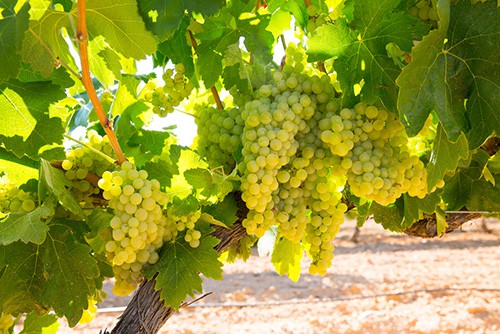
Chardonnay's roots lie in 12th-century Burgundy, France, but the grape's ability to thrive anywhere has seen it planted in more than 40 countries.
It also helps that Chardonnay tastes delicious and takes well to oak, letting winemakers create unoaked and oaked varieties for different tastes. This versatility makes it a popular choice for wine connoisseurs and beginners.
Today, Chardonnay is the world's most distributed grape, holding the impressive accolade of producing dry white wine, dessert wine, champagne, and sparkling wine. No other grape on the planet is so versatile!
This guide to Chardonnay wine covers everything you need to know, including its origin, tasting notes, and some interesting facts.
Characteristics of Chardonnay
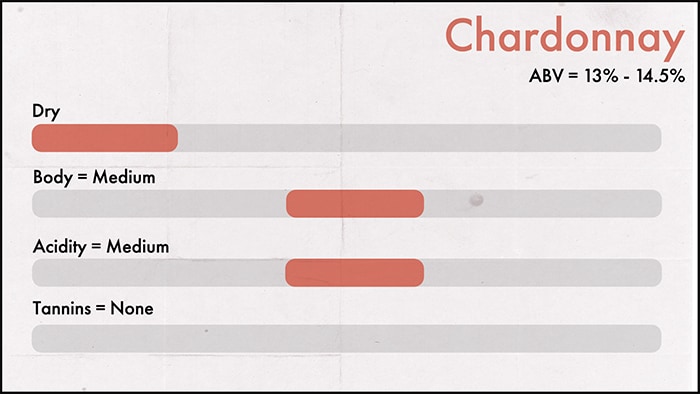
Chardonnay is a flatteringly approachable classic dry white wine with moderate acidity, medium-high alcohol (13 - 14.5% ABV), and a medium to full body.
Chardonnay is crisp with minerality, or fruity and oaky, depending on where it is grown and produced. Oak aging gives Chardonnay a fuller body and dials down the acidity, producing a creamier wine perfect for sipping.
Most Chardonnay wine is pale yellow with hints of silver, with a pale tone indicating a young varietal with minimal aging. When aged, the wine takes on a deeper yellow hue, with straw yellow and gold tones.
Like other grapes, Chardonnay is grown in multiple countries, and there are regional differences in tasting notes. For example, French Chardonnay is crisp, with stronger apple notes, and some minerality, while Californian wine is buttery and more tropical.
Generally, Chardonnay has notes of apple, Meyer lemon, citrus, meringue, and cedar on the nose and palate. Tropical varieties can have notes of kiwi, stone fruit, and hints of Bosc pear, with butter and cream when oak-aged.
Oaked and unoaked Chardonnay wines are distinct, with unoaked varietals demonstrating a crisper acidity and oaked varietals being creamier.
Chardonnay Tasting Notes
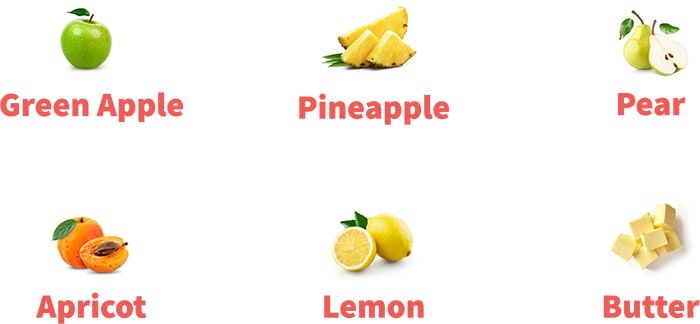
Chardonnay is vinified in every major wine-producing country, and it tastes different depending on where it grows and how it is made.
The typical French Chardonnay is crisp and distinctly mineral, with bright apple, Meyer lemon, and quince notes. New Zealand Chardonnay is more tropical, with a buttery finish, thanks to higher levels of lactic acid.
Step over to California Chardonnay, and you get a chalky minerality underpinned by baked apples and tropical notes.
However, whichever region you pick, oak-aging imparts more robust flavors of vanilla, butter, coconut, and dill – you can use these hallmarks to sniff out aged Chardonnay, which many people prefer due to its creamy profile.
An unoaked Chardonnay usually has apple, citrus, lemon, wet stone, and pear flavors, with tropical fruit notes from warm regions.
Oak aging can introduce toasty oak and vanilla notes, although wines still have a fruit-forward profile that refreshes the palate. Spicy notes are uncommon but welcome from aging, including tarragon, parsley, lemon zest, and marjoram notes.



How is Chardonnay Served?
Chardonnay wine is traditionally served in an aroma collector glass (or Burgundy glass), preferred because it helps oaky and buttery notes develop. However, decanting and breathing aren't necessary, so a standard or white wine glass is also suitable.
We recommend serving Chardonnay chilled at 45–55°F / 7-12°C, with a temperature of 9°C, providing the best tasting experience.
After opening, Chardonnay keeps well for up to one week in the fridge, but buttery flavors can lose their strength if the wine is allowed to reach room temperature. Keeping the bottle chilled is recommended.
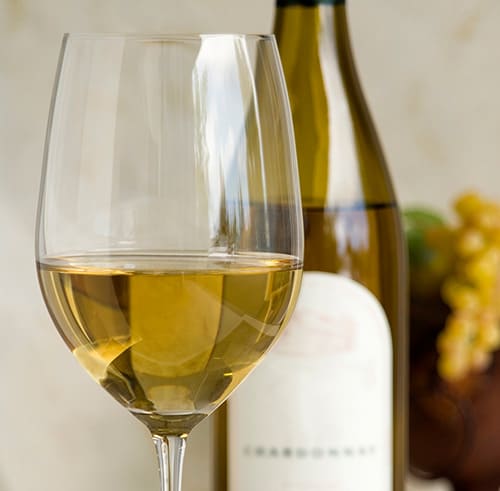
The Chardonnay Grape
The Chardonnay grape originates from the Burgundy wine region of eastern France, named after the Chardonnay commune in the Maconnais region.
It is believed to have been planted as early as the 12th century, with the first plantation in Chablis. Today, Chablis is France's leading Chardonnay producer, with no other grape variety allowed in the Chablis Appellation d'Origine Contrôlée (AOC).
Some of the most expensive wines in the world come from this region, with French Chardonnay considered the gold standard. However, like all of France's grapes, Chardonnay has traveled the world and is grown in multiple countries.
Chardonnay's plantation popularity is due to the grape's ease of cultivation and adaptability, with the grape taking well to most soils and climates.
The best Chardonnay wine is produced in warmer regions, where sunny conditions give the grapes a higher sugar content.
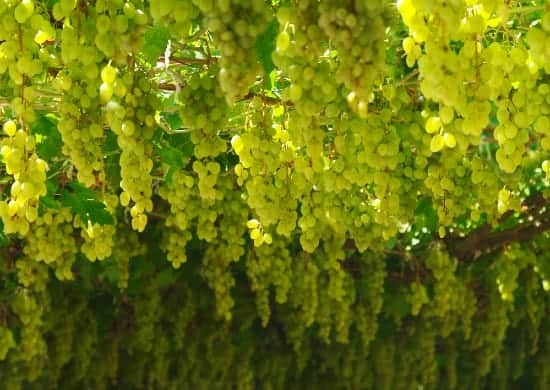
Notable Regions for Chardonnay
Sonoma Coast, California (Unoaked)
The cool nights and temperate days of the Sonoma Coast produce light, floral Chardonnay grapes. Wines from this region are crisp, lean, and fresh, with apple and citrus notes and underpinnings of honeysuckle and stone.
Sonoma Coast Chardonnay has a distinct minerality, with intense green fruit flavors and hits of citrus that excite the palate.
Western Australia (Unoaked)
More than 21,000 hectares of Chardonnay are planted in Australia, making it the country's most successful white grape. Western Australia is the most prominent region, and you'll find the most plantations in the Margaret River subregion.
Margaret River has a humid Mediterranean climate, producing acidic Chardonnay grapes that have tropical notes with vinification.
Mendoza, Argentina (Oaked)
Argentinian oaked Chardonnay has a distinctive citrus and stone fruit profile with buttery notes. Mendoza is the primary growing region, offering some of the highest vine altitudes in the world with an arid, subtropical climate with hot summers.
Mendoza accounts for nearly two-thirds of Argentinian vineyards, with most Chardonnay grapes grown in the foothills of mountains.
Napa Valley, California (Oaked)
Napa Valley enjoys a dry Mediterranean climate, perfect for Chardonnay. The long, warm summers produce mineral grapes perfect for oak aging, with oaked wines delivering notes of butter, cream, and popcorn.
If you want a lush, creamy Chardonnay with notes of warm peaches and lemongrass, you can't go wrong with one from Napa Valley.
Chardonnay Food Pairings
Chardonnay pairs brilliantly with pungent cheeses like camembert, Limburger, Stinking Bishop, and stilton. Add crackers, breadsticks, freshly cut carrot sticks, table grapes, and jalapeno relish for a delicious table snack.
Unoaked Chardonnay goes well with light starters like fish pâtés and chicken or vegetable terrines, while oaked Chardonnay complements cured meats.
When pairing Chardonnay with main dishes, fish, seafood, and chicken in white/cream sauces are the best pairings. Lobster, shrimp, crab, and scallops go great with Chardonnay, with unoaked variants complementing meaty fish.
The buttery richness of oaked Chardonnay pairs great with fatty fishes like salmon and mackerel, and it also works well with roast pork.
For an in-depth guide to Chardonnay food pairings, don't miss our dedicated guide!
3 Awesome Chardonnay Wines to Try
These are some great options for exploring what Chardonnay has to offer at different price points.
1. Under $15 - Kendall Jackson Vintner's Reserve 2020

Kendall Jackson Vintner's Reserve is a Californian Chardonnay aged 7 months in French (4% new) and American oak (6% new) barrels. It has a fruit-forward profile, toasted oak aromas, and attractive baked apple flavors.
The wine opens with a bouquet of oak, vanilla, and pear, with a hint of peach. On the palate, it explodes with butter, pear, melon, and oak.
Rich and decadent are the best words to describe this wine. It pairs excellently with shellfish like crab, lobster, mussels, and oysters.
We actually have a great guide on buying Chardonnay for less $20 that you might want to read. There's also our guide to the best Chardonnay at Costco.
2. Under $30 - Stag's Leap Wine Cellars Karia 2020

Stag's Leap Wine Cellars Karia is a delicious white wine that benefits from 9 months of French oak aging. Pleasing citrus, orange blossom, and pear notes give it a fresh vibe, while notes of oak and vanilla add depth.
The smoothness of this wine shines through, with buttery notes and undertones of apricot cobbler making it morish. Aromas of pear, peach, apple, and vanilla dominate the nose, with oak, butter, and fresh pear on the palate.
Try pairing this Chardonnay with grilled chicken, pasta in white sauce, clams, mussels, grilled salmon, and Caesar salad.
3. Under $100 - Joseph Phelps Freestone Vineyards 2019

If your budget stretches to it, Joseph Phelps Freestone Vineyards 2019 offers a sublime wine-tasting experience, with extended 14-month aging in 44% new and 56% used French oak barrels giving it special oaky notes.
You can expect a bouquet of oak, Meyer lemon, honeyed toast, and crushed rock, with flavors of oak, apple, and lemon on the palate. The complex flavors are beautifully balanced, with medium acidity and a medium body.
We love this wine with grilled fish, grilled chicken, and linguine, and it also works splendidly with mushroom dishes and roasted vegetables.
3 Fun Facts About Chardonnay
1. Chardonnay is the most successful grape in the world.
Chardonnay is the most widely distributed grape in the world, with plantations spanning more than 40 countries. There are over 500,000 acres of Chardonnay, which is increasing due to its ability to thrive in any climate.
2. Chardonnay is named after the French commune.
The Chardonnay grape gets its name from the commune in the Saône-et-Loire in the region of Bourgogne-Franche-Comté in eastern France, where the grape was first grown. Today, it is still filled with vineyards dedicated to the grape.
3. Buttery notes come from Malolactic Fermentation.
Malolactic fermentation converts harsher, tart tasting malic acid into much smoother lactic acid, giving Chardonnay wine more buttery notes. Without fermentation, Chardonnay is tart and crisp! Oak aging doesn't add buttery notes but does add creamy notes.
